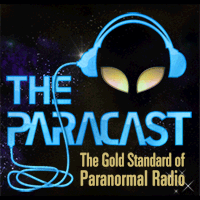marduk
quelling chaos since 2352BC
I don't believe anything that anyone tells me - that's why I dedicated several months to studying the key features of his gravitational field propulsion physics concepts, and confirmed them on paper, before I chose to discuss them with anyone. You can check it for yourself by charting the photon emissions; a superluminal gravitational field propulsion system would in fact generate these optical artifacts. But they're no more exotic than a delayed thunderclap - it's just an optical mirage.
Like I said, both of the images are just a kind of mirage, or an echo if you prefer, so there's no causality violation involved with that - but it's a pretty cool effect.
Superluminal gravitational field propulsion doesn't in and of itself result in any causality violations, because your on-board clock is always running forward at the same rate as your departure clock. But things get more complicated when you work with a pair of superluminal Alcubierre warp ships and add a source of time dilation into the equation - then it might be possible to create a closed timelike curve (CTC). However, CTCs are a feature of general relativity anyway, as Gödel demonstrated with his brilliant rotating universe metric, and as we've seen with other concepts such as the Tipler cylinder. So it makes no sense to me to throw out the Alcubierre metric on this basis, when we didn't throw out GR on this basis. You don't hear any physicists going around saying "GR is a nice theory but I rejected it because it permits closed time-like curves." So it would be illogical to dismiss the Alcubierre metric for that reason.
But honestly I'm not convinced by the conventional explanation linking FTL travel/communication to causality violation. Because that scenario is actually a variant of the ladder paradox (aka the pole and barn paradox), and just like we find with the ladder paradox, the two reference frames disagree not only on the spatial coordinates, but they disagree on the time coordinates as well (the key features of the ladder paradox that change the game aren't represented in the Minkowski spacetime diagrams on that page - which apparently is a common mistake). When I solved that scenario by accounting for both spatial and time dilation, I found that the earliest that Alice could receive her own message back from Carol (which required instantaneous transmission, which is impossible), was simultaneous with her original transmission. So that model linking FTL travel to causality violation is false. Everett published an even more elaborate scenario linking FTL travel with causality violation, which I haven't analyzed, but I assume that it boils down to the same underlying principle. I should probably set aside a week to solve his scenario analytically, but frankly I was so pleased to find the key flaw in the prevailing argument that I chose to move on to more interesting issues instead. I'll attach the graphical depiction that I made of the ladder paradox (just read A-B-C-D as Alice-Bob-Carol-Dave, and the "Barn Frame" is the Alice-Bob reference frame, and the "Pole Frame" is the Carol-Dave reference frame), which illustrates the scenario properly and eliminates the question about causality, in case you care to look at it.

Hmmm... maybe?
Here's what I get of the FTL = time machine equivalence.
Suppose Khan Noonien Singh leaves a war-ravaged Earth in the year 1996 in a DY-100 class sublight vessel Botany Bay, headed for Alpha Centari. Let's say at sublight speeds, it's going to take him 300 years to get there.
200 years later, Kirk leaves Spacedock in the Enterprise at Warp 7, and heads to Alpha Centari, a quick 1 day trip. On the way, he detects the Botany Bay, drops out of warp, and scopes the scene out. Instead of messing with Khan, he decides to leave well enough alone, and heads on to Alpha Centuri.
From Khan's frame of reference, he first sees the Enterprise appear, then disappear, then reappear at Alpha Centari just over a year later (the time it takes the light to go 1/3 the 4LY distance remaining to Alpha Centari. Then, 3-ish years later, he sees the Enterprise leave Spacedock from Earth. It's out of sequence. He sees it here->Alpha Centari->Earth, when Kirk's frame is Earth->Khan->Alpha Centari. So causality from his frame of reference is already all mucked up.
Now here's where it gets even more squirrely.
Let's say Khan succeeds on taking over the Enterprise and then, a year later sees it in orbit of Alpha Centari? Who's future is that?
It gets even more interesting with more observers moving, and adding subspace radio.


